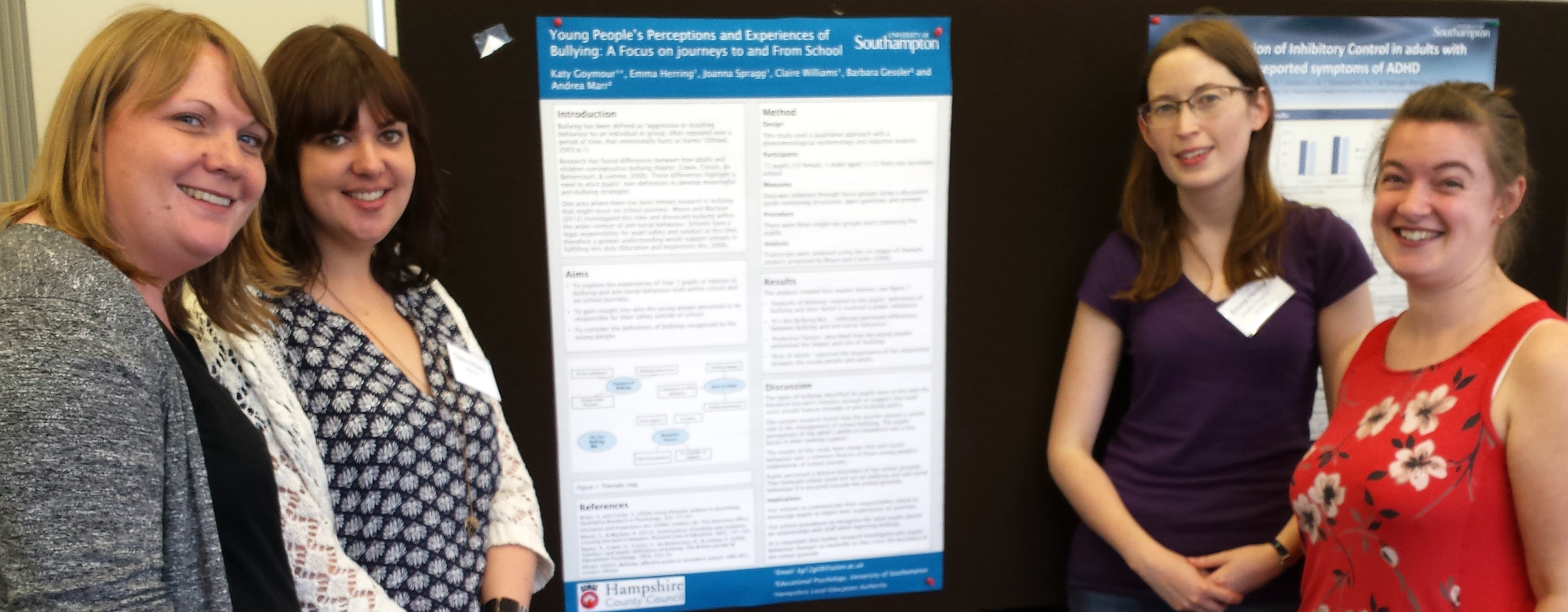Assignment type: Research Project (Small Scale Research Project, Year 1)
Authors: Katy Goymour, Emma Herring, Joanna Spragg, Claire Williams, Barbara Gessler, Andrea Marr and Hanna Kovshoff
Submitted: Spring 2016

The poster for this research study won first place at the 2016 Southampton School of Psychology Post Graduate Research Conference.
Research Summary:
Bullying appears to be an unpleasant but inevitable part of school for many pupils, and has been shown to impact on emotional well-being and academic achievement, both in the short and the long-term.
